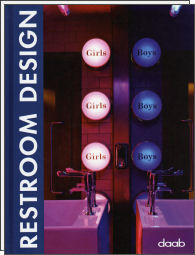Society has created dozens of euphemisms to refer to the restroom and to talk about the bodily functions that occur in it, relegating it until now to the bottom of the ladder when it comes to designing public spaces. In many cases, public restrooms are associated with poor hygiene, vandalism and perversion-a piace you only visit if you absolutely have to. However, smartening up in public or private places has been a feature of many civilizations throughout history, with the oldest found in the city of Mohenjo-Daro (India) from 2,000 years BC.
The evolution of the bathroom has gone hand-in-hand with the evolution of civilization, keeping abreast of changes in living conditions and different ways of understanding hygiene. This, together with the evolution in technology and the design of bathroom equipment, means the washroom is today the object of greater attention by designers, who are giving free rein to their creativity to transform it into a space of maximum comfort, with an uncommon artistic language that goes against the grain of what was the norm until now.
Today there are many public spaces in which the restroom enjoys a privileged status, making it an object of visit in bars, restaurants, airports, motorways, museums, offices, spa complexes, hospitals and hotels. Thousands of solutions are employed to merge creativity with the needs of the different groups (men, women, children, the disabled) in these spaces. Some of the examples shown here reveal this evolution with public designs for claustrophobics where the user can see everything that surrounds him outside without being seen, or bathrooms that are true artistic expressions you visit not just for physical relief but also out of aesthetic interest. In short, they are examples of the evolution of the public restroom which is today slowly approaching the collectivizing behavior it had in the past and, thanks to groundbreaking design and cutting-edge technology, is making a visit to the restroom a revelation for the senses. |
La società ha creato decine di eufemismi per indicare il bagno e per parlare delle funzioni corporali che vi si compiono, un ambiente che fino ad ora è rimasto confinato su un piano secondario sulla scena del design degli spazi pubblici. In molti casi, i servizi pubblici sono associati a luoghi poco igienici, oggetto di vandalismo e perversioni, nei quali si entra solo in caso di estrema necessità. Tuttavia, l'igiene del corpo in luoghi pubblici o privati, è stata presente in molte delle civiltà nel corso della storia; gli esempi più antichi si trovano nella città di Mohenjo-Daro (India), 2.000 anni prima di Cristo.
L'evoluzione del bagno è stata parallela a quella della civiltà, ed è avvenuta in base alle mutazioni delle condizioni di vita e delle diverse forme d'intendere l'igiene. Tutto questo, sommato all'evoluzione della tecnologia e del design di installazioni per il bagno, è riuscito a fare in modo che i sanitari siano, nell'attualità, maggiormente considerati da parte dei designer, che applicano la loro creatività per convertirli in spazi di massimo confort, con un linguaggio artistico poco usuale che si ribella contro quanto stabilito fino ad ora.
Sono attualmente numerosi gli spazi pubblici in cui l'igiene gode di uno status privilegiato, convertendosi in un luogo da visitare: bar, ristoranti, aeroporti, autostrade, musei, uffici, stabilimenti termali, ospedali, alberghi; sono migliaia le soluzioni adottate per fondere la creatività con le necessità dei vari collettivi (uomini, donne, bambini, invalidi) in questi spazi. Alcuni esempi riportati qui sotto mettono in luce questa evoluzione con progetti pubblici per persone affette da claustrofobia, in cui l'utente può vedere tutto ciò che lo circonda all'esterno senza essere visto, o bagni che diventano vere e proprie espressioni artistiche che l'utenza visita non solo per un bisogno fisiologico, ma anche per l'interesse estetico. Si tratta, in definitiva, di esempi dell'evoluzione del bagno pubblico attuale, che si avvicina a poco a poco ai comportamenti socializzanti che si verificarono in altre epoche, facendo in modo, con l'aiuto del design più all'avanguardia e della tecnologia più innovativa, che la visita alla latrina sia una rivelazione per i sensi. |


aa.vv.
RESTROOM DESIGN
editore DAAB
edizione 2008
pagine 384
formato 18x23
hardcover
tempo medio evasione ordine
5 giorni
25.00 €
11.00 €
ISBN : 978-3-86654-023-1
EAN : 9783866540231
|
|